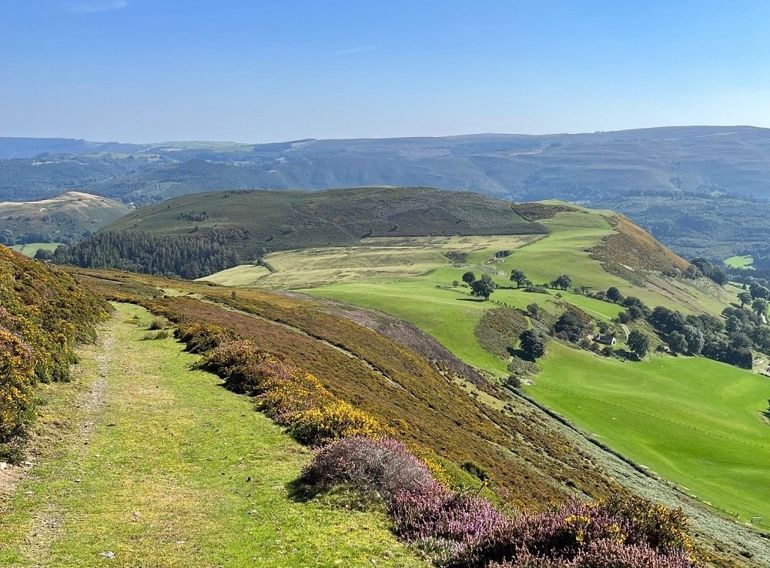Work continues to boost Llantysilio mountain

Further management work was completed this past year to help aid Llantysilio Mountain’s recovery from the devastating wildfires that previously damaged large parts of the protected site.
Here Jenny Hoyle, NRW Environment Officer, tells us a little more about the importance of the habitat restoration work.
--
It has been a real pleasure to be out completing monitoring surveys on Llantysilio mountain this spring.
When spring takes hold the soundscape of this wonderful and internationally important mountainous landscape is taken over by curlew, wheatears, meadow pipits, skylarks, and the repetitive ‘taktaktak’ of visiting ring ouzels. If you’re one to wake up very early and venture out on the moors in time for sunrise, you might even be lucky enough to witness the elusive black grouse lekking (their mating dance).
Over the last year we have continued to aid Llantysilio mountain’s recovery from the wildfires it suffered in 2018 and 2021.
Our officers worked closely with colleagues from Denbighshire County Council to manage around 30 hectares of Llantysilio mountain by stopping bracken encroachment and cutting heather and gorse. We also worked closely with a local grazier to improve access for livestock in areas where grazing would be advantageous, both for the habitat and to the grazier.
Why is this important?
Gorse cutting is one essential way to reduce fire load and stop the smothering of other species. This also helps with movement and available grazing for sheep by local graziers. We do want to have some gorse on the mountain, but we need to keep the areas in check to ensure we only have the right amount.
Through our heather management work we also aim to achieve a mosaic of ages through cutting small areas year on year. Upland bird species like to have a variety of heather lengths for different parts of their life cycle; short areas may be used for lekking, the boundaries of heather cuts are used for feeding chicks, and taller heather allows the hen and chicks to disappear should predators be nearby. The variety in heather ages also supports a greater diversity of flora and fauna including mosses, bryophytes and invertebrates.
The Llantysilio Mountain range, a Site of Special Scientific Interest (SSSI) and part of the wider Berwyn a Mynyddoedd De Clwyd / Berwyn and South Clwyd Mountains Special Area of Conservation (SAC), covers around 1,000 hectares and supports a variety of habitats including heather moor, limestone and neutral grassland habitats and small parts of ancient woodland. It is managed with the help of Biodiversity Funds for Ecosystem Resilience (BERF) funds to maintain and improve the upland habitat and increase the number and variety of ground nesting birds on the site.
Following our latest round of monitoring surveys, the initial indications are that the number of lekking black grouse has increased in the last 12 months on the site. This would be a buck in the trend as the black grouse population across Wales has been declining in both number and range for some time.
What work is planned in the future?
Future BERF funding will be utilised to restore heather in parts of the burn areas and increase the area available for ground nesting birds, such as black grouse and curlew. The funding will also allow us to continue to employ strategic cutting to lower the fire load.
Another priority will be protecting wetter mires, flushes and small areas of peat on the mountain both for the habitat and to build resilience on the site as we face the climate emergency.
